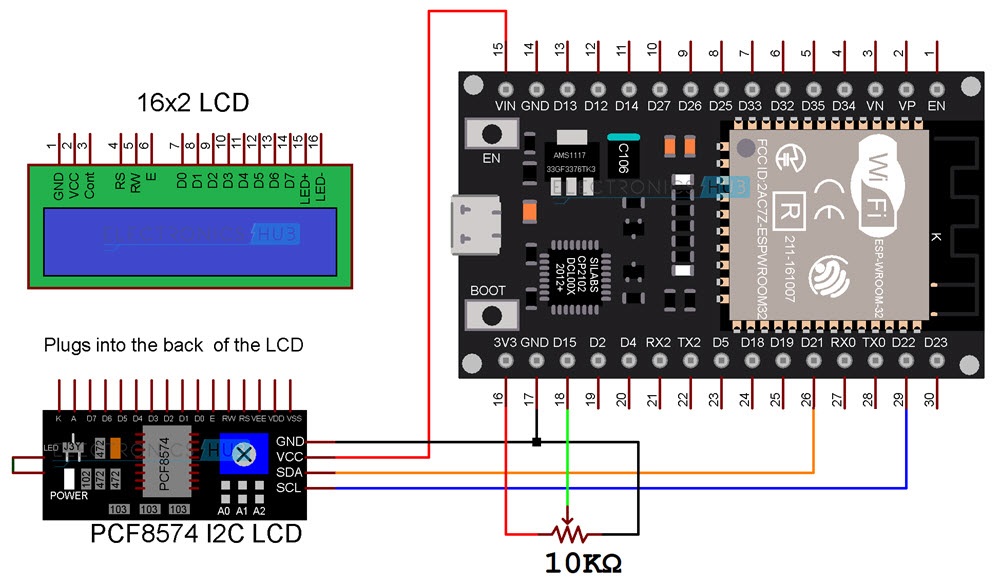
- #ARDUINO LCD LIBRARY I2C ESP32 HOW TO#
- #ARDUINO LCD LIBRARY I2C ESP32 DRIVER#
- #ARDUINO LCD LIBRARY I2C ESP32 FULL#
- #ARDUINO LCD LIBRARY I2C ESP32 SOFTWARE#
- #ARDUINO LCD LIBRARY I2C ESP32 CODE#
All of this information does apply to any number of modules up to 8 on the same bus.ĮSP32 (or ESP8266) LiquidCrystal_I2C LCD in Arduino
#ARDUINO LCD LIBRARY I2C ESP32 HOW TO#
And those are the two I’ll be using in LAB21 to show you how to use multiple I2C LCDs with ESP32 at the same time. Now, I’ve got 2 I2C LCD modules with 2 unique addresses (0x27, 0x26). Therefore, the I2C device address is now 0x26 instead of the default value 0x27. Here, I’ll solder the A0 bridge which forces the LSB in the address to become 0.

And potentially be able to use up to 8 different I2C LCD devices on the same bus at the same time. This will allow multiple I2C LCD modules to be connected on the same I2C bus at the same time which we’ll be doing actually hereafter (in LAB21).Ĭhanging The I2C LCD Module Default AddressĪs you know, the 3 non-fixed value bits in the address allow us to make 8 different combinations. You can solder these solder bridges to change the I2C address of the device. It also shows you that 3 bits of the address are actually controllable by the user. The default address for the PCF8574 IC as stated in its datasheet is shown in the figure down below. In this section, we’ll only discuss the important things in order to get started with these modules as quickly as possible and control them with ESP32 or ESP8266 boards. You can check it out if you’re interested in learning more about it.
#ARDUINO LCD LIBRARY I2C ESP32 DRIVER#
In this previous article, I’ve demonstrated everything about this IC using its datasheet and build a driver library (in Embedded-C) for this IC. Moreover, it’s shared with all I2C devices on the bus, so you can still have so many other modules/sensors connected on the same bus. The I2C IO expander IC (PCF8574) is commonly used as a cheap solution to implement an I2C LCD interface that replaces the classic parallel connection to the LCDs (at least 6 pins) with an easy to use I2C bus (only 2 pins).
#ARDUINO LCD LIBRARY I2C ESP32 FULL#
#ARDUINO LCD LIBRARY I2C ESP32 SOFTWARE#
#ARDUINO LCD LIBRARY I2C ESP32 CODE#

7.1 Display Custom Characters – Arduino Code Example.7 ESP32 LiquidCrystal_I2C LCD Module – Custom Characters.6.1 ESP32 I2C LCD Scrolling Text – Arduino Code Example.6 ESP32 LiquidCrystal_I2C LCD Module – Scrolling Text.5.1 ESP32 I2C LCD Static Text – Arduino Code Example.5 ESP32 LiquidCrystal_I2C LCD Module – Static Text.




 0 kommentar(er)
0 kommentar(er)
